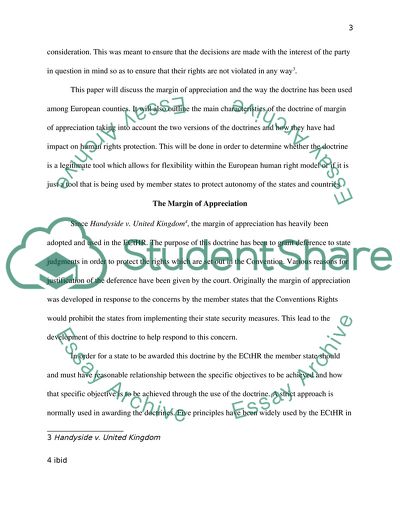Cite this document
(The European Human Rights Model Coursework Example | Topics and Well Written Essays - 3250 words, n.d.)
The European Human Rights Model Coursework Example | Topics and Well Written Essays - 3250 words. https://studentshare.org/law/1840891-is-the-margin-of-appreciation-a-legitimate-tool-that-allows-flexibility-within-the-european-human-rights-model-or-is-it-merely-a-means-by-which-states-protect-their-own-national-sovereignty-discuss
The European Human Rights Model Coursework Example | Topics and Well Written Essays - 3250 words. https://studentshare.org/law/1840891-is-the-margin-of-appreciation-a-legitimate-tool-that-allows-flexibility-within-the-european-human-rights-model-or-is-it-merely-a-means-by-which-states-protect-their-own-national-sovereignty-discuss
(The European Human Rights Model Coursework Example | Topics and Well Written Essays - 3250 Words)
The European Human Rights Model Coursework Example | Topics and Well Written Essays - 3250 Words. https://studentshare.org/law/1840891-is-the-margin-of-appreciation-a-legitimate-tool-that-allows-flexibility-within-the-european-human-rights-model-or-is-it-merely-a-means-by-which-states-protect-their-own-national-sovereignty-discuss.
The European Human Rights Model Coursework Example | Topics and Well Written Essays - 3250 Words. https://studentshare.org/law/1840891-is-the-margin-of-appreciation-a-legitimate-tool-that-allows-flexibility-within-the-european-human-rights-model-or-is-it-merely-a-means-by-which-states-protect-their-own-national-sovereignty-discuss.
“The European Human Rights Model Coursework Example | Topics and Well Written Essays - 3250 Words”. https://studentshare.org/law/1840891-is-the-margin-of-appreciation-a-legitimate-tool-that-allows-flexibility-within-the-european-human-rights-model-or-is-it-merely-a-means-by-which-states-protect-their-own-national-sovereignty-discuss.


